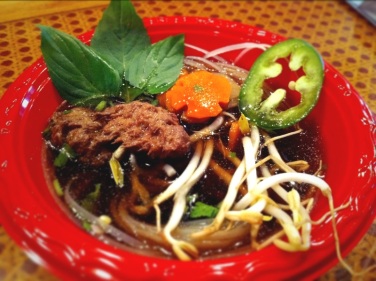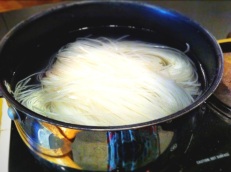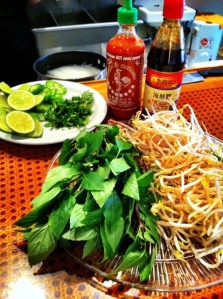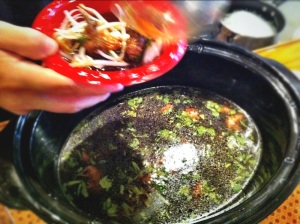PEACH CONGEE FOR LIVER QI STAGNATION!!!
What do you get when you have student who works in the prepared foods section at Whole Foods… an awesome yummy snack! Well, that’s exactly what EH brought to us last Wednesday for our Nutrition and Diet Therapy class at the East West College of Natural Medicine. EH’s congee was an absolute treat after VS’s hearty and tasty main course of Saffron Lentil rice with Chicken (see next post). We ate like royalty today thanks to VS and EH!!!
Peach Congee for Liver Qi Stagnation
Ingredients: 1 cup white rice (any variety will do)
1-2 peaches (or half bag of frozen chopped peaches)
1 Tablespoon honey (or as much as desired)
Directions: Put one cup of rice in crock pot. Cover with 5 cups of water. Cook on low setting overnight (6-12 hours). If using fresh peaches, boil a small pot of water, and once water is boiling, place peach into water for 30 seconds with a pair of tongs. Remove peach and peel off skin. Chop peaches into bite sized pieces, and keep in refrigerator overnight. In the morning, when ready to eat, put chopped peaches into the congee, and add honey. Add small amount of butter if desired.
This dish is ideal as a daily breakfast, dessert, or snack. The recipe can be doubled or tripled to make a large pot that can last for 3-4 days. I chose this simple and inexpensive recipe because it consists of ingredients that we are all familiar with, and it is as easy to prepare as pouring a bowl of cereal (but much more nourishing!). Those with liver qi stagnation are often already overworked and will not be compliant with following complicated dietary guidelines.
Rice is sweet in nature, and is very nourishing, especially when cooked into a congee. Peaches are sweet and sour, and are a gentle mover of qi. While the more pungent foods may move qi more forcefully, they run the risk of damaging yin when overused. Liver qi stagnation is often accompanied by heat signs, so peaches are a safer route when looking for a dish that can be eaten daily. (Also, most people don’t want pungent foods at breakfast!) Honey is neutral to slightly warming, and also moistens the intestines, which can be beneficial if constipation is manifesting as a side effect of qi stagnation. All of these ingredients also strengthen the spleen and are very easy to digest, which is important in cases of liver qi stagnation because digestion is usually impaired due to this condition.
Note: Blackstrap molasses can be used in place of honey in cases of accompanying blood deficiency, or if your tatsebuds prefer it!
TCM DOS: Liver Qi Stagnation
Western Correlations: Stress, emotional disorders, depression, PMS
TCM S/S: hypochondriac pain, distention in chest and hypochondria, sighing, hiccups, belching, depression, irritability, easy to anger, nausea, vomiting, epigastric pain, abdominal distention, diarrhea, poor appetite, sour regurgitation, plum pit sensation in throat, painful periods, irregular periods
Tongue: normal to slightly red on sides
Pulse: wiry
Foods that Help: beets, carrots, celery, potato, tomato, onion, lemon/lime, spinach, cherry, pineapple, mulberry, plum, raspberry, wheat, rye, spelt, pine nut, lima bean, pea, black sesame seed, pork, saltwater fish, crab, cow milk cheese, yogurt, goat and sheep milk cheese, anise seed, brown sugar, rice vinegar, wine, grape, lychee fruit
Foods to Avoid: avoid excess alcohol, hot/spicy foods, raw foods, greasy foods, and cold/frozen foods
Helpful Cooking Methods: steaming, boiling for shorter period, blanching, and cooking with alcohol






















